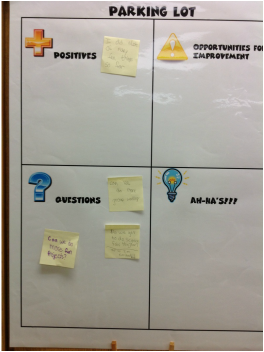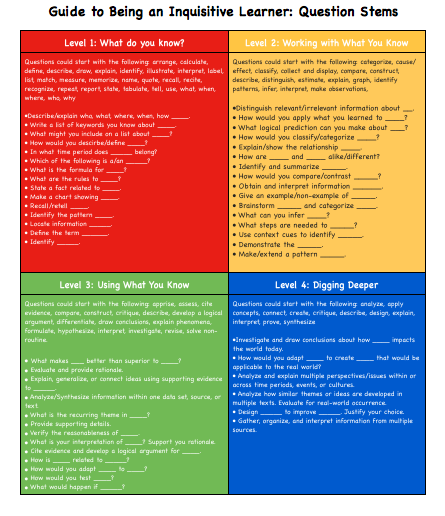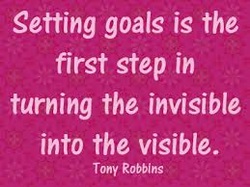How do we improve classroom participation?
ALLOW STUDENTS TO HAVE A VOICE
In this Ted Talk, Adichie discusses the danger of narrowing people down to a single perspective. This applies to voice and choice in that we do not want to narrow our students' perspectives down to our own. They are individuals and we must respect their voice.
How Can I Easily Implement Student Voice in the Classroom?
Integrating student voice into the learning environment allows you to better monitor their learning, celebrate success and "aha" moments, address questions or concerns, and adjust your practice in order to better meet the needs of your students.
Giving students a voice in the classroom often time starts with small steps, such as the following:
Giving students a voice in the classroom often time starts with small steps, such as the following:

The Parking Lot - This tool is successful for a teacher to check and adjust their instruction in a very timely manner. It helps groups realize the change process has highs and lows; it give members an opportunity to voice opinions in a positive way it identifies constructive ways to improve or express learning; it gives group members an opportunity to comment, ask questions, or request information that is off the current subject or task without interrupting; and it works to suggests ideas for improving the work session or activity.
Steps for Implementing the Parking Lot:
**Please note this can also be done online through an application, such as Padlet You can create a poster to put at the front of your class with the QR code that will direct them to your Parking Lot. If you use an online application, make sure you elect a couple of students to take charge of reminding their classmates to participate as well as yourself to give feedback. **
Modeling - Teacher modeling of personal mastery is also incredibly important when offering student choice. It also allows for structure. Take the following link and you will find an awesome article that provides some easy tips for "Strategic Modeling: Balancing Structure with Choice."
Steps for Implementing the Parking Lot:
- Make a poster with four sections: Positives, Areas for Improvement; Questions, and Ideas for Adjustment. Explain and model to your students the process and the goals of the Parking Lot.
- Elect 2-3 students from your class to be in charge of passing out a 4-5 sticky notes to each student each day or each week. Encourage students to actively contribute to the Parking Lot as needed.
- During class, check into the parking lot and address each sticky as they come forward. Make sure students understand that you value their comments and/ or questions.
**Please note this can also be done online through an application, such as Padlet You can create a poster to put at the front of your class with the QR code that will direct them to your Parking Lot. If you use an online application, make sure you elect a couple of students to take charge of reminding their classmates to participate as well as yourself to give feedback. **
Modeling - Teacher modeling of personal mastery is also incredibly important when offering student choice. It also allows for structure. Take the following link and you will find an awesome article that provides some easy tips for "Strategic Modeling: Balancing Structure with Choice."
Giving Voice through Higher-Order Thinking Questions

Here are some question stems to encourage critical thinking in your classroom. You can click on the image to take you directly to the file. This would be an awesome thing to print out and put on students' desks. You could say something like, "I just asked a Level 1 question, can you turn it into a Level 3?"
Best Practice: Check where your assessments and instruction are in regards to the Taxonomy Chart below:
**Please note: You will see two versions of the files: one is a document you can download, the other is a version available through Scribd, a web-based storage program that allows you to view the file on the website. Web-based storage cannot be accessed in CCSD, but you can access it at home.**
|
|||||||
**Webb's Depth of Knowledge and Bloom's Taxonomy are used to help teachers establish and implement rigor in the classroom. Webb’s Depth of Knowledge questions and Bloom’s Taxonomy both provide a systematic way for teachers to implement and scale up rigor in the planning of lessons and daily classroom discussion.**
How voice can be integrated through classroom discussion?
|
Talk Moves:
Talk Moves is a framework for establishing student accountability and protocol for daily classroom discussions on concepts being learned. 1. Re-voicing: Teacher or student repeats exactly what the speaker has said. This ensures clarity for the listeners and the speaker.
2. Re-stating: Ask a student to restate what someone else has said but in their own words. This validates the speaker, helps listeners to follow, and gives processing time to those who need it.
3. Apply Own Reasoning: Students, at this point, are allowed to either agree or disagree with a student and make their own argument with evidence.
4. Adding On: Invite other students to participate in the discussion. This keeps the discussion active.
5. Wait Time: Make sure to give a few minutes of processing time. Technology
Here is our top 10 favorite tech tools for encouraging student voice through classroom discussion and collaboration:
|
Socratic Seminar:
Setting up a Socratic Seminar with your students is a great way for providing a structure for discussion surrounding reading material. It is interdisciplinary, not just for English classes :), because it can be structured to stimulate discussion around any text. Here are the steps:
There are many different ways to structure the actual seminar. There can be an inner and outer circle, people can be voted or called out, etc. The way the discussion is set up is completely up to you and the students. Here is a structure to use for questioning:
|
How can I use goal-setting and reflection to enhance student voice in the classroom?
Goal-setting and reflection are incredibly powerful tools in involving students in their learning. Students can set both academic and behavioral goals and use reflection to monitor their own progress towards meeting those goals.
Why Set Goals?
- Goals clarify direction and purpose for learning.
- Goals create a timeline and accountability.
- Goals allow you to see and celebrate what you accomplish.
- Goals put large wants and needs into workable pieces.
This video explains the importance of conducting goal-setting with your students. This is one area of weakness for US students and could be a contributing factor to lack of achievement.
Strategies for Goal-Setting

Make it Behavioral:
Steps for Goal-Setting with Students:
- Ask the following question: "What changes do you need to make in your daily practice to better facilitate your learning? How will you monitor your daily practice? How will you know whether or not you have met your goal?"
- Ask the following: "What do you want to accomplish in this unit, this week, this month, and/or this semester? How do you plan on accomplishing this? What are your action steps for each day to ensure you meet your goal?"
Steps for Goal-Setting with Students:
- Have students get clear on the goal. What exactly do they want to accomplish or adjust?
- Have students write their goals down in a location they regularly check.
- Have students check whether or not their goals are SMART: specific, measurable, attainable, relevant, and time-bound.
- Have students break down their goals into specific steps for achievement and reflect on where they currently are in relationship to their goal.
- Have students visualize the end point of their goal. How will they benefit from achieving this goal?
- Encourage students to take daily action toward meeting their goal!
| Plan, Do, Check, and Adjust Goal-Setting Action Plan Worksheet | |
| File Size: | 219 kb |
| File Type: | docx |
Strategies for Reflection

- Have students keep a daily journal or data chart to consistently monitor their progress towards meeting individual goals, whether academic or behavior.
- Use some of the strategies from the "Holding Learners Accountable" page under the Building Culture section in our learning environment. Here is a link: HOLDING LEARNERS ACCOUNTABLE.
- Conduct teacher-to-student weekly, bi-weekly, or monthly conferences to check in and have students reflect on their progress. Use an appointment sign-up sheet at the front of the class to help manage this conferencing day or week. Also encourage parent involvement during the conference. Invite parents to talk or conference through a telephone call.
- Keep a data wall in the classroom, where students can move depending on progress towards their individual goals.
- Use bell work or exit slips to have students self-reflect on their progress. Socrative, an iPad app, as well as Google Forms are a quick and efficient way of gathering quick feedback and checking for understanding.
**Please note that goal-setting is pointless unless students regularly self-reflect on their progress towards meeting those goals and teachers offer input or assessments to determine where students are in relation to their achievement of those goals. Goal setting and reflection should be active and ongoing within the learning environment. When students meet goals, they should set new ones. This encourages a Growth Mindset.**

